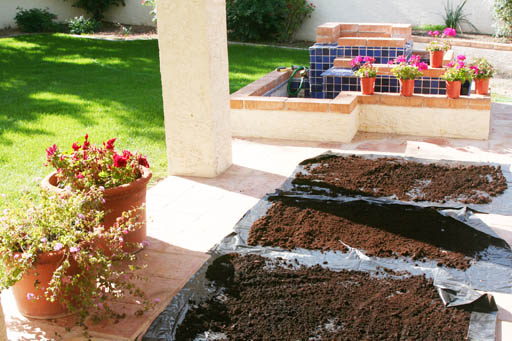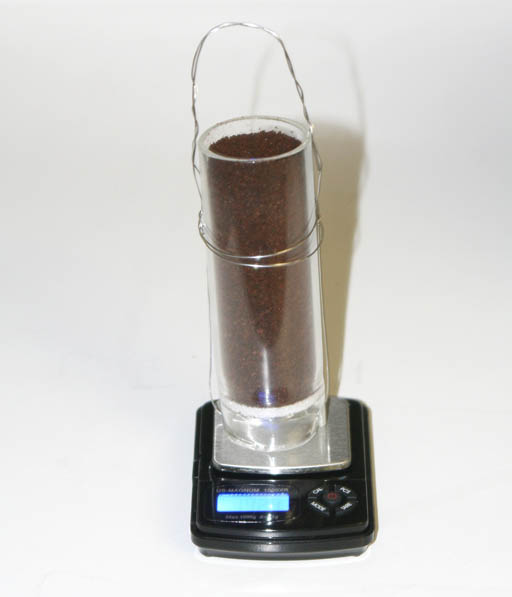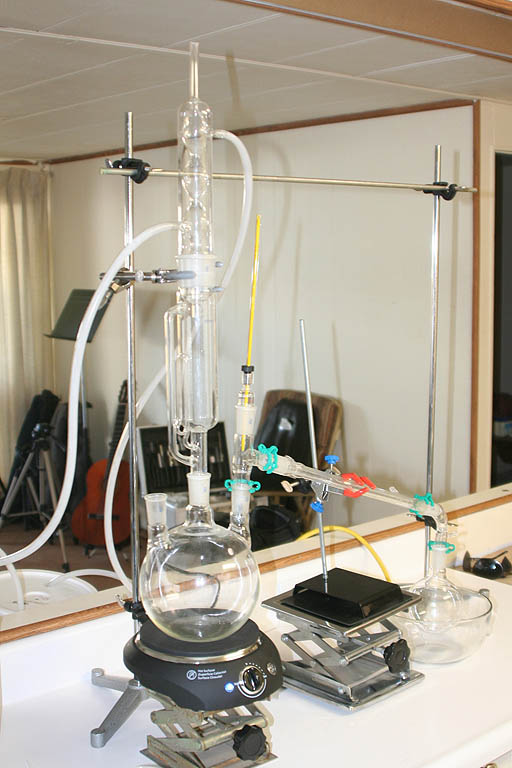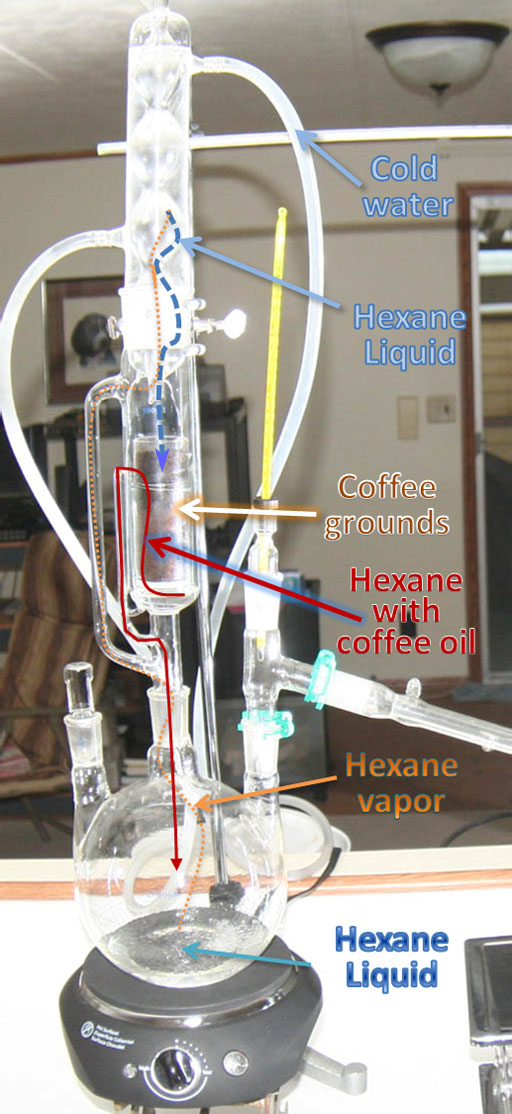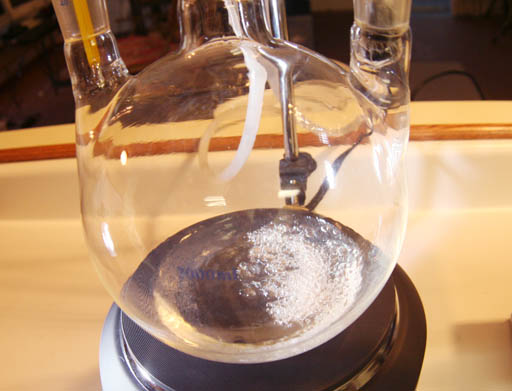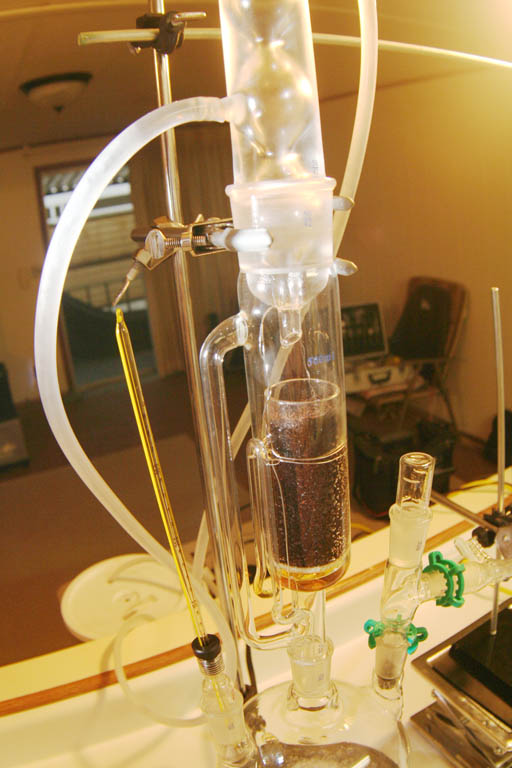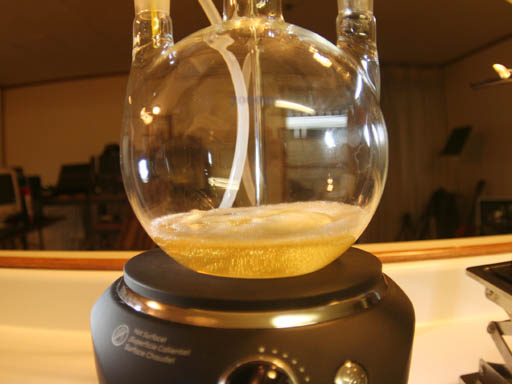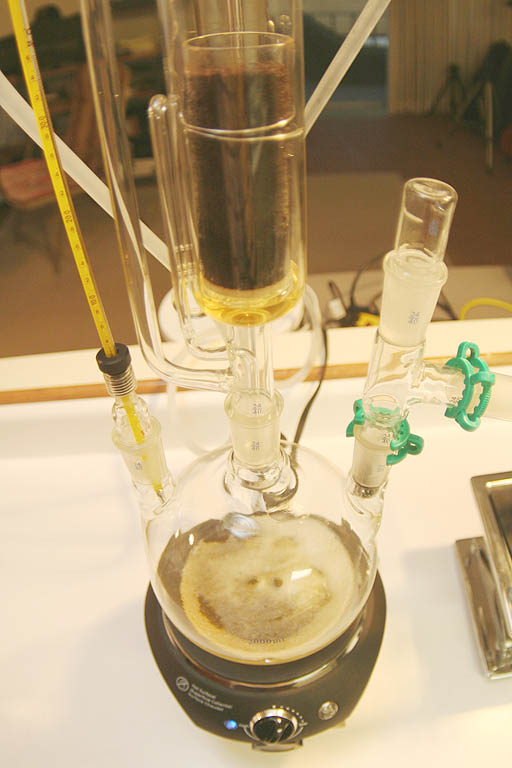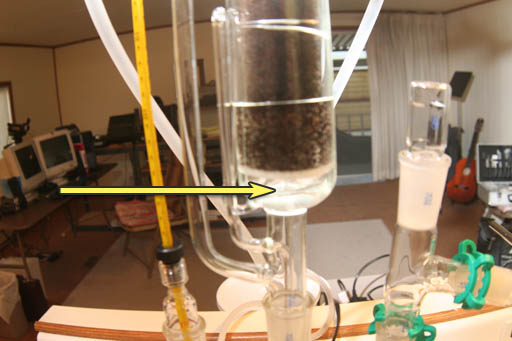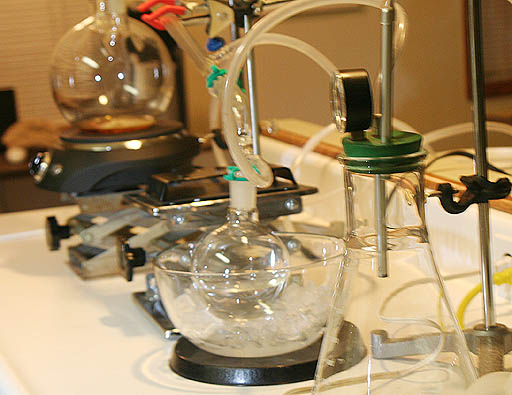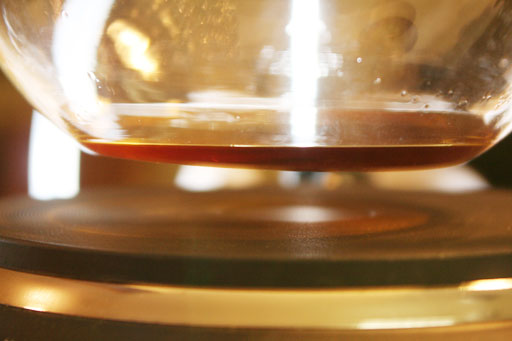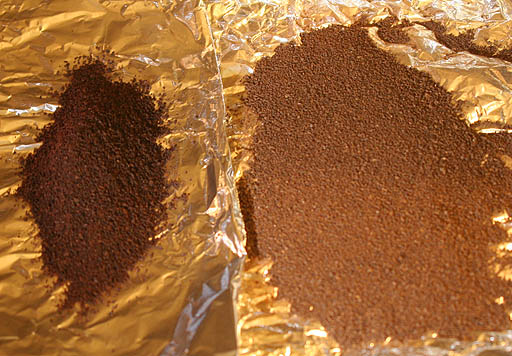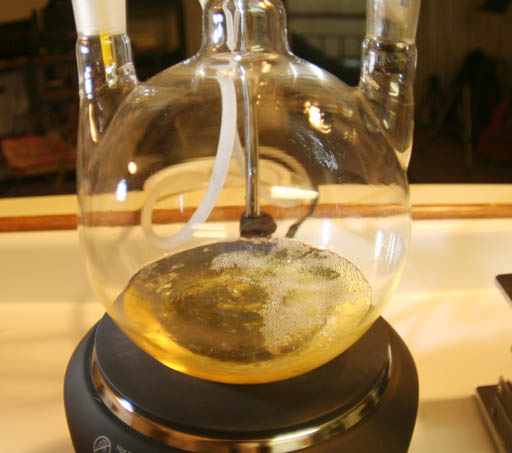Extraction of Coffee Oil from Used Coffee Grounds |
|
Drying Coffee Grounds: Here you can see the contents of two 5 gallon buckets of coffee grounds being sun dried. It took about one day. If spread thinner, a couple of hours would have been enough. |
|
Test Sample Used: 50 grams of coffee grounds were put into a glass extraction thimble. The goal is to find what percentage (by weight) of the coffee grounds is coffee oil. |
|
Soxhlet Extraction Apparatus with Recovery Distillation Accessory: The tall part on the left is for the extraction of the coffee oil from the coffee grounds. Hexane will be used to extract the coffee. Hexane is a 6 carbon chain similar to some components of gasoline. The tube and flask on the right is for recovery of the hexane solvent. |
|
Soxhlet Extraction Apparatus: This is the apparatus that extracts the coffee oil from the coffee grounds. Liquid hexane is boiled in the bottom flask. Hexane vapor travels up and through the side arm. It condenses back to liquid in the cooled condenser at the top. Liquid hexane drips down on a container full of coffee grounds. The hexane dissolves the coffee oil. Once the container is full of hexane, a small glass tube on the left automatically siphons out the hexane with the dissolved coffee oil. That goes back into the bottom flask. The process repeats as more hexane vapor condenses and washes the coffee grounds. This setup allows the hexane to extract the coffee oil several times. It's efficient and uses the least amount of hexane to do the job. |
|
Coffee Grounds Weighed: This is the extraction thimble. 50 grams of coffee grounds were placed in the thimble. The thimble was lowered into the top of the soxhlet extraction glassware. |
|
Boil the hexane: The hot plate is turned up and the hexane starts to boil. It has a boiling point of 69°C (156°F). |
|
Hexane liquid drips on coffee grounds: The vapor travels up the side glass tube and condenses on the cold condenser. It drips down on the coffee grounds and fills the thimble with hexane, thereby soaking the coffee grounds and dissolving the coffee oil in the grounds. Below the thimble you can see the coffee colored liquid. That is a mixture of hexane and coffee oil. Once the hexane/coffee oil mixture fills up to the top of a small glass side tube, the mixture will siphon down into the large bottom flask. |
|
Coffee oil in flask: As the hexane/coffee oil mixture siphons into the bottom flask, you see that it goes from clear to a light coffee color. Each time the thimble fills with hexane and siphons out, the liquid in the flask gets a little darker because it has dissolved more and more coffee oil. |
|
Coffee oil being extracted: Here is another picture of the setup. Notice the coffee colored liquid below the thimble. That indicates that coffee oil is being extracted. |
|
Extract become clear: Each time the thimble fills with hexane, the hexane/coffee oil mixture gets lighter because less and less coffee oil is left. I let it fill 5 times. It took about 10 minutes for the hexane to fill the thimble each time. Here the hexane/coffee oil mixture is quite light meaning most of the coffee oil has been extracted. |
|
Separate hexane from coffee oil and recover the hexane: Now that all of the coffee oil is extracted and in the hexane in the bottom flask, the task is to distill off the hexane leaving just the coffee oil. The side arm is used for that. The tube held by the orange clamps is another condenser. Cold water runs through it. It will condense the hexane vapor allowing the liquid to run downhill to a collection flask on the right. |
|
A partial vacuum speeds up the collection of hexane: In this picture, you can see I added a flask and pump that creates a partial vacuum. This allows the hexane to boil at a lower temperature and be collected faster. Ice surrounds the round collection flask to prevent the hexane liquid from evaporating too easily. About 80% of the hexane was recovered. To be economical, the hexane recovery has to be much better. |
|
Pure Coffee Oil: After the hexane is boiled away, all that is left is the pure coffee oil. There's not much oil because there were only 50 grams of coffee grounds used. There were about 6 milliliters of coffee oil extracted. |
|
Before and After: The coffee grounds on the left were what the grounds looked like before the extraction. The coffee grounds on the right are after the coffee oil had been extracted. Note that those are quite a bit lighter. The grounds weighed 45.4 grams after the coffee oil was extracted. It weighed 50 grams before. So that's 4.6 grams of coffee oil that was extracted. So the coffee oil is 4.6/50 (9.2%) of the weight of the coffee grounds. That's on the low side of what has been published, but it is still a respectible amount. |
|
Here is more data regarding coffee grounds.
Dried coffee grounds has a density of 3.5 pounds per gallon (0.42 grams per milliliter).
One gallon of dried coffee grounds requires 0.64 gallons of hexane to immerse the grounds in hexane. |
|
The key to making this procedure economical is to reduce the amount of loss of hexane during the process. Hexane is about $16 per gallon so you can't afford to lose much. In theory, all hexane could be recycled. In practice, hexane evaporates easily making it difficult to prevent loss. Much of the loss can be prevented using cold traps to condense or freeze any hexane vapor trying to excape. The fittings on the apparatus also have to be better sealed to prevent loss. So I believe it could be economically feasible to extract coffee oil from used coffee grounds if a well-sealed extraction system is designed. More cost savings can be gotten using solar energy to provide the heat for boiling the hexane.
-Ken Costello (costello@chemistryland.com) |
